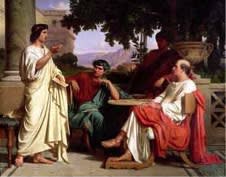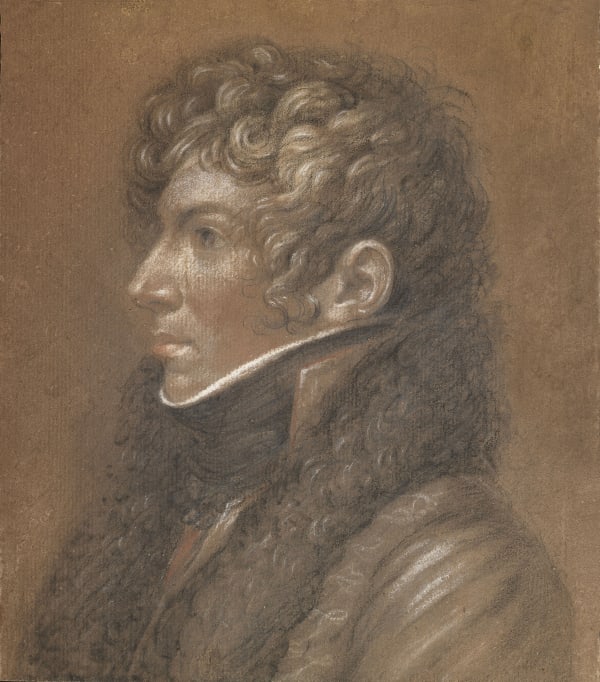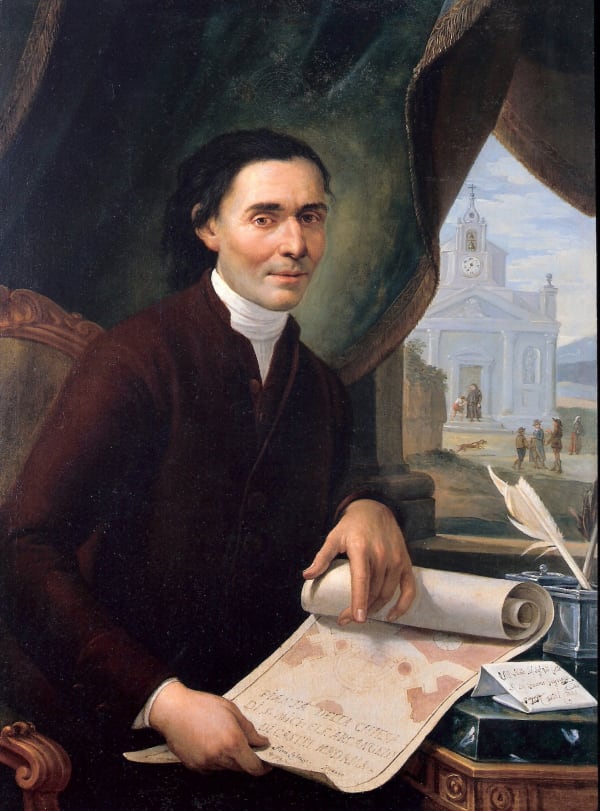
CHARLES-FRANÇOIS JALABERT NÎMES 1818-PARIS 1901
Provenance
Formerly Jules Salles collection
Exhibitions
Sélection de dessins et d’acquarelles, Parigi, Galerie la Nouvelle Athènes, 21 March – 11 April 2015.
Literature
Sélection de dessins et d’acquarelles, exhibition catalogue, Paris, Galerie la Nouvelle Athènes, 2015, cat. no. 36.
Charles-François Jalabert was born in Nîmes in 1818. He enrolled at the school of drawing in Nîmes at the age of only 15, studying there under the guiding hand of the painter Alexandre Colin. He enrolled at the École des Beaux-Arts in 1839 and began to work in Paul Delaroche’s atelier. He won the second Rome prize in 1841, but despite several attempts he never managed to win the Grand Prix, and so he decided in 1844 to travel to the Eternal City under his own steam in order to study the great masters of the past there. Returning to Paris in 1847, he began to show his work regularly at the Salon from 1850, presenting paintings whose subjects were primarily of a historical or religious nature. From 1863 the artist’s painterly interests began to focus on portraiture, leading him to produce a considerable number of canvases for the Orléans family, who were living in exile in England, and for numerous members of the French aristocracy, most famously the Count and Countess of Paris, the Duke and Duchess of Chartres and the family of the Duke of Aumale and of Queen Marie-Amélie. In 1855 he was awarded the much-coveted title of Chevalier de la Légion d’honneur, going on to become an Officier de la Légion d’honneur a decade later, in 1867. Jalabert died in Paris in 1901.
The artist produced the magnificent drawing under discussion here while in Rome in 1846, the last year he lived in the city. On the right of the drawing Chalabert has sketched a half-bust of an ephebus, whose idealised features echo Classical statuary and hark back to the iconography of Antinous, the handsome young man who, Roman history tells us, was the lover of Emperor Hadrian and whom Hadrian transformed into a god following his premature death. The bust certainly echoes one of the countless statues that Jalabert had seen during his time in Rome.
The true protagonist of the drawing, however, is the male figure in the middle foreground, depicted in Roman costume wearing a toga with an ample drape, his bust leaning on a half-column, while a landscape hinted at with summary strokes of the pencil in the background places the figure in an undefined space. The figure’s facial features, emphasised by the choice of palette, present a marked characterisation and are most probably those of the person to whom the drawing is dedicated in the inscription on the right-hand side, namely Jules Salles. Salles (1814–1900), a painter born in Nîmes, moved for a certain amount of time to Paris where he succeeded in joining Delaroche’s atelier for a few months thanks precisely to his friendship with Jalabert.
The drawing in question was conceived as a study for the figure of the poet Varius in a painting depicting Virgil and Varius at the House of Maecenas now in the Musée des Beaux-Arts di Nîmes, which the artist had painted in 1846 and shown at the Salon the following year. The study is emblematic of the dual interest that Jalabert had cultivated from the very start of his artistic career: namely the historical theme on the one hand, and portraiture on the other.

C. Jalabert, Virgil and Varius at the House of Maecenas, 1846, oil on canvas,
Nîmes, Musée des Beaux-Arts
Join the mailing list
Subscribe to our newsletter to receive all the news about exhibitions, fairs and new acquisitions!


